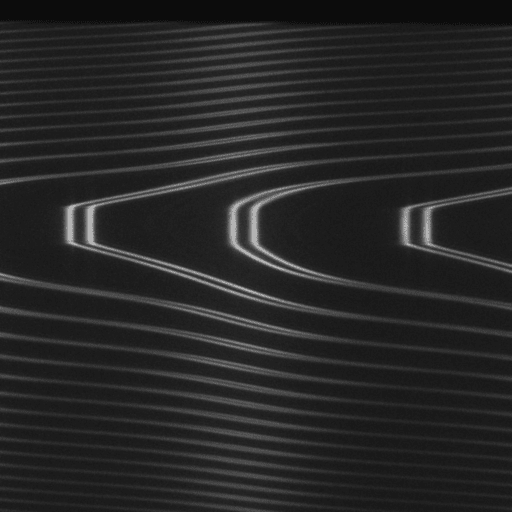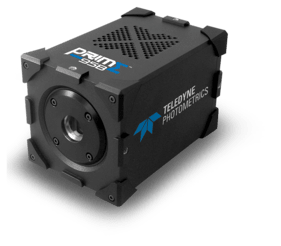Interferometry and Lithium Mapping
Dr. Matthew Gebbie
Department of Chemical and Biological Engineering, University of Wisconsin-Madison, Madison, WI, USA
Background
Dr. Matthew Gebbie and team are an interfacial science and soft materials lab focusing on molecular interaction forces and self-assembly in soft materials. Dr. Gebbie told us more: "The key theme we are driving at is how ionic self-assembly influences electron transfer and ion transport. This turns out to be a key question, both for energy storage through batteries and capacitors, but also thinking about electrochemical reactivity such as splitting water to generate hydrogen or turning CO2 into CO. All of these areas involve ionic self-assembly at interfaces."
"For our research, we use interferometry as well as surface-sensitive optical spectroscopy to try and understand what's happening at interfaces. We are also aiming to use fluorescence microscopy approaches to measure lithium diffusion coefficients in ionic liquids, for next-generation electrolytes and batteries. We want to know how lithium ions move in these materials, even at very low concentrations."

Figure 1: Image of Interference fringes, used to measure the separation distance between two
mica surfaces. Different electrolytes can be confined between these surfaces to determine how
ion size,concentration,and chemical properties influence electric double-layer formation. The
distance resolution inthat image is approaching the size of a water molecule.

Figure 2: A video of darkfield particle tracking, illustrative of the types of single particle
tracking measurements in development to evaluate electric field-driven dynamics in ionic
liquids.
Challenge
Dr. Gebbie is using a range of different microscopy and spectroscopy techniques to interrogate surfaces and materials, mainly interferometry, optical spectroscopy and highly-sensitive fluorescence spectroscopy, similar to single-molecule imaging methods. Each of these techniques comes with its own challenges, as Dr. Gebbie explained.
"For both interferometry and optical spectroscopy, signal sensitivity is a challenge we have to think about. The more sensitive we can be, the higher framerates we can access. We are aiming for these short acquisition times in order to do high frame rate interferometry."
"Frame size is also very important for interferometry; we need to be able to image across the full width of the sensor to utilize all our diffraction gratings and the fringe splitting they produce. The number of pixels between two adjacent fringes is very important, as with interferometry we are targeting resolutions down to 3 angstroms (Å), this is approaching the size of a water molecule."
"With our fluorescence microscopy methods, we need high-performance detectors in order to be confident about the fluorescence shifts that we see. We want to map lithium mobility in ionic liquids, and the detector is vital to see how low a concentration of lithium we can detect. We want to put in the minimal amount of fluorophore and remain highly sensitive to optical shifts."
The [Prime 95B] is a uniquely powerful instrument for us, we didn’t want to deal with EMCCDs, and with the Prime 95B we can continually push the limits with lower intensity signals at higher framerates.
Dr. Matthew Gebbie
Solution
The Prime 95B sCMOS is the ultimate answer for sensitivity, combining a large 11 μm pixel with near-perfect 95% quantum efficiency at peak. Featuring a large sensor and the ability to image at high frame rates, the Prime 95B is an ideal solution for these microscopy and spectroscopy challenges.
Dr. Gebbie shared his experience with the Prime 95B, "We have two Prime 95Bs, one we are using in a surface forces system for interferometry, with plans to also do optical spectroscopy in situ. The other camera is used to track single fluorescent particles, looking at dynamics and electrolytes. The 95B has also played a big role in our studies to use fluorophores to study lithium diffusion. The resolution and sensitivity are clearly a big step up from what I was seeing previously, with the Prime 95B we can see on the order of a fraction of a mol percent, and I don't think we would have been successful with cheaper, more conventional detectors. I'm pretty convinced we can measure more lithium diffusion coefficients in a few months than people have measured in the prior 15 years."
"On the surface forces side the Prime 95B opens the door to trying laser-based optical spectroscopy such as Raman or IR in situ in these nanoconfined electrochemical interfaces. We could not pull this off with previous detectors, and from what we've seen the 95B makes this possible. This is a uniquely powerful instrument for us, as we didn't want to deal with something with issues like an EMCCD. With the Prime 95B, we can continually push the limits with lower and lower intensity signals at higher and higher framerates, and that's exactly what we need for both the interferometry as well as the fluorescence mapping."

Learn More About The Prime 95B
Download This Customer Story